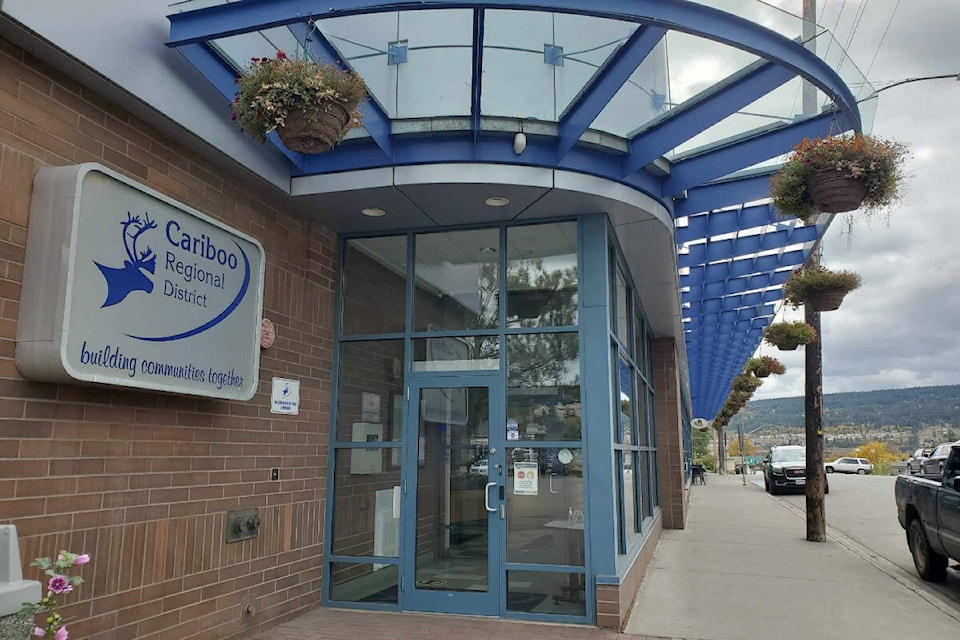The Cariboo Regional District is implementing a new corporate communications strategy over the next four years in an effort to help build and maintain the trust of the public in the CRD.
The goal is to establish a two-way communication system that is informative, proactive, inclusive and transparent. This will be accomplished using primarily digital communications and incorporating non-digital platforms such as print media and in-person engagement.
This will be done by promoting public awareness; making information available to residents through a variety of ways; encouraging participation and opportunities for the public and other interested parties to take part in the decision-making process; enhancing opportunities for reconciliation with Indigenous nations and government and increase district communications through local media coverage.
“I think we’re continually working towards gaining or increasing the trust the public has in governments in general,” said board chair Margo Wagner. “That’s one of the big things because I think everybody has a certain amount of distrust. Trying to find an effective way that will reach a large majority of the population.”
She said they hear all the time around public hearings which might or might not be contentious from people who did not hear anything about it and want to know why.
“That’s a struggle. We’re never going to be able to reach 100 per cent of the people,” she said, “but the goal is to increase the number of people that we do reach.”
The way the District communicates with residents has changed over the last two decades. It now employs a digital-first strategy which includes the creation of a new website with a built-in email subscription feature. It has also seen significant growth in its social media followings.
Facebook followers grew from 2,783 in 2018 to 4,200 in 2022 while email subscribers went from 1,909 in 2018 to 2,769 in 2022.
One example of digital engagement is the email newsletters now sent out by many of the directors.
“Probably half the board is doing them right now,” said Wagner. “That really helps because even if I don’t have the actual email address of somebody, I’ve got loads of people that then forward it on to other people so they all get it eventually.
Traditional communication means remain highly relevant. These include direct mailers, signage, print and radio advertising and media relations.
While media interviews dropped from 122 in 2018 to 44 in 2022 the plan calls for an expansion of non-digital advertising, including a regular feature in newspapers, community newsletters and radio stations.
Wagner said print media is still viable, particularly for the more remote areas, but it can be problematic. Many people have notices in their mailbox that they do not accept junk mail so things like direct mailers do not reach them.
However many of the older generation still prefer reading the newspaper or do not have good access to high-speed internet.
Area directors also take on their own means of communicating with the public. Shortly after Wagner was elected to the board she got some director initiative funds and put up six bulletin boards in her area where she posts items of interest.
“There are ingenious ways of trying to reach people but, like I said, you’re never going to reach everybody - it’s tough.”
She pointed out that the size of some of the electoral area works against them.
“I mean, people out at Mahood Lake may not be willing to drive into Forest Grove for a public hearing,” she said. “I’m certainly not anywhere near the largest area, I mean out in the Chilcotin they drive for hours and hours to get from point A to B.”
It is also important for them to listen when people are expressing concerns and be willing to take some criticism.
A variety of methods will be used to track the level of success of the new communications plan. Public surveys will be conducted in 2024 and 2026 to gauge the district’s communication efforts over time.
Also included is media monitoring as well as social media and website analytics plus tracking attendance and participation at regional district events. It hopes to increase participation in events or engagement activities by 10 per cent a year from 2023-2027.
Overall, communications must be tailored for all residents whether remote, rural or urban. There are also a number of seasonal residents particularly in the South Cariboo which must be taken into account when planning the various strategies.
“What works in my area may not work in somebody else’s,” said Wagner.
